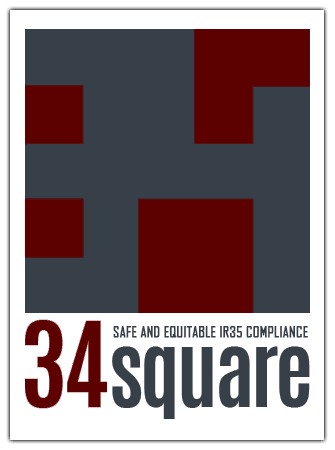AN EXPERT VIEW

Tony Austin has been a tax specialist for over 25 years. He is now a tax consultant. His services include advice on employment tax matters and handling enquiries from HM Revenue & Customs, including contesting their arguments and negotiating settlements on behalf of clients. Here’s what he had to say about 34square. It was at a time when clients were responsible for status determination, however it is equally relevant for contractors beyond the repeal of the reforms in April 2023. And note that his closing remarks refer to the risk of a dispute even being raised by HMRC, not the risk of losing one:
‘It is widely accepted that a right of substitution can be the determining factor in deciding that an engagement has outside IR35 status. However, it would be naïve to rely wholly upon it because:
- HMRC are adept at showing that right to be fettered or compromised, perhaps in contract wording issues or contradictions, or in witness testimony.
- They can also attack the realistic capability and feasibility to carry out a substitution.
34square addresses these challenges as follows:
- The 34square Right of Substitution Declaration between worker and client neutralises any claim that such a right is fettered.
- Contractors subscribed to 34square can execute a substitution with legally binding contracts that transfer the delivery responsibility to the substitute and oblige the contractor PSC to pay the substitute, neutralising any argument that a substitution is unfeasible.
Further, a 34square status determination statement (SDS) incorporates numerous other robust and simple-to-accommodate drivers for outside IR35. Clients have a primary obligation to take reasonable care in this determination of IR35 status. With 34square:
- Considerable care and attention is paid to ensuring the validity of the right of substitution as a main driver of the outside IR35 determination, even to the extent that the realistic capability to execute it is uniquely and robustly covered.
- The status determination statement aligns with HMRC’s own CEST tool and is consistent with case law precedent.
- A specific SDS is issued for each engagement, with a simple capability to tailor for variations between workers.
- The SDS is workflow-driven, audit-trailed and securely stored, with the added bonus of automatic periodic reminders to re-assess and re-issue every 6 or 12 months.
One can never remove all risk of an HMRC dispute, but given HMRC targets those disputes based upon probability of victory, if the 34square engagement steps are executed, that risk is likely to be very considerably reduced.’
